To many people, the terms motorhome, campervan and RV are interchangeable, though RV is generally thought of as an American word for a motorhome. In fact, there are key differences between the three, and it’s worth knowing what they are if you’re thinking of buying or hiring a rolling holiday home.
Campervans – Small but Mighty
Campervans are the smallest of the three (though there’s huge variation in each category). They can be anything from a converted car like a Renault Kangoo or Citroen Berlingo to a large Transit-style van. The classic campervan is the VW bus, which has been taking families on holiday for over 50 years.
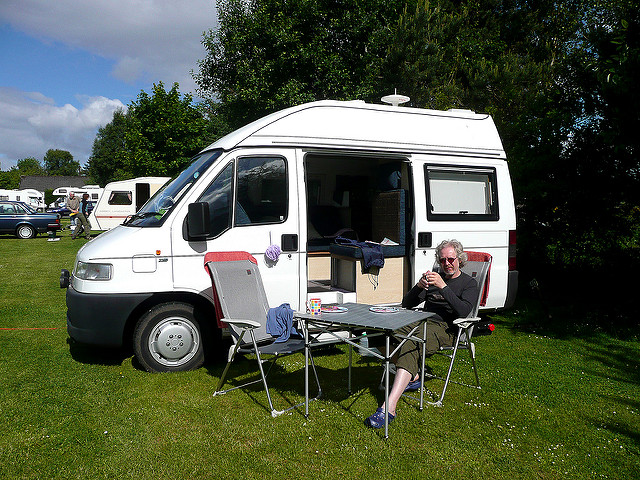
Campervans have the advantage of being small and easy to drive and park, and they’re usually cheaper than motorhomes on fuel, parts, ferry charges, tolls, tax and insurance. They still use a standard size pitch at campsites, so you won’t make any savings there, but you will have more space to move around outside.
On the down-side, they can be quite cramped inside for more than a couple of adults, and there probably won’t be room for any bathroom facilities. That’s fine if you’re the latrine-digging, lick-and-a-promise-wash type of camper, but it has its limitations in the British weather, especially for a longer trip.
It’s worth remembering that, while you’re driving, all passengers must wear seat-belts in any of these vehicles, so make sure there are enough fixed seats with belts for all travellers. It’s also sensible to have all the seats facing either forwards or back: in the event of an accident, side-on whiplash is much worse than straight-on, and travelling sideways is more likely to cause car-sickness.
Coach-built Motorhomes at Motorhome Escapes
This is the style we rent out and sell at Motorhome Escapes. These are perfect for those looking for a more comfortable holiday. Moving up a notch from the campervan, low-profile coach-built motorhomes give enough room for a couple of people to be comfortable and will have all the facilities you need. Modern ones like ours keep the profile low by having a fixed double bed above the garage storage and electric drop-down beds above the lounge area. The wash-room will be a wet-room with a shower, and the toilet holding tank will be small, so you’ll have to pump it out frequently, but if you normally stay at campsites that isn’t a problem.
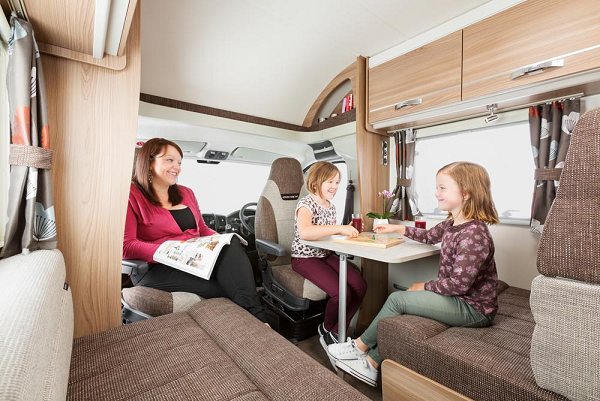
Small motorhomes allow you the freedom to wild camp without having to dig holes, they’re still quite easy to drive and there’ll be sensible amounts of storage space for holiday kit.
The models used by Motorhome Escapes have no rear door, so fitting a bike rack is easy, too, if you can’t get your bikes in the garage. Their low profile means better fuel economy than full-sized motorhomes can achieve. Creating the feel of a more open space, the driver seats are not separated from the main area of the motorhome, and can just be turned around when stopped to create more seats around the living area.
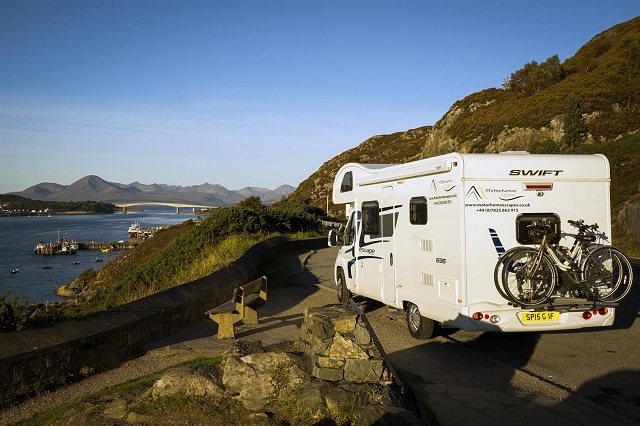
The next step up is the over-cab bed motorhome, with a small “cabin” over the top of the driver’s cab. We have these models available as well (we call them The Lewis), and they are very roomy with 5/6 berths. A small party of 2 people can travel in luxury in this motorhome, turning the back two beds into storage space, and shutting it away with internal doors. The cabin area over the top of the drivers cab can either provide extra storage space or fixed bed space. These larger models are less-aerodynamic than the low-profile versions but if you’re not keen on beds that come down from the ceiling, this might be a better choice for you.
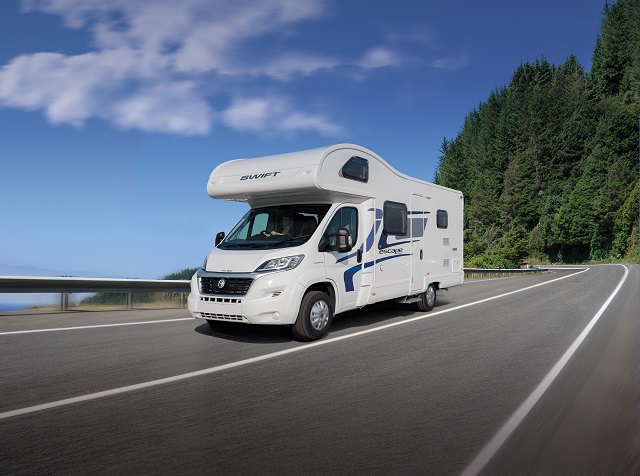
A-Class Motorhomes
Going up in size (and in price tag), A-class motorhomes are what most people picture when they hear the word “motorhome”. Big, sleek, with the driver’s cab integrated into the rest of the vehicle (unlike some smaller models), these behemoths are designed for the job, usually well-insulated, and with room for four or more people to be comfortable both during the day and at night.
Some A-class motorhomes come in under the 3.5 tonne driving licence limit, so you can drive them without taking another test. But they’re still big vehicles and you’ll need to keep that in mind when you’re driving one. Most weigh over 3.5 tonnes, and may need a third axle; however, power steering and electric gear-shifts mean you won’t come home looking like a body-builder!
The lighter the vehicle the better it is for fuel consumption, and the less likely you are to get bogged down on a grass pitch, but make sure your motorhome has sufficient payload for all the gear you want to take.
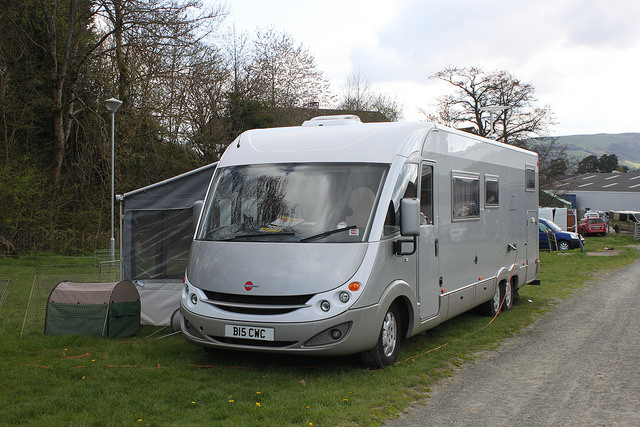
One advantage of the A-class motorhome is that the cab is integrated into the rest of the space, (which is not standard for all motorhomes but it is a feature in all Motorhome Escape vehicles) which means that you don’t have to go outside to get from the driving seat to the main living area. This is obviously great if it’s raining, and it’s often cited as good security – though most people won’t go camping anywhere they’d need to worry about that.
Some of the biggest A-class motorhomes have huge garages – big enough to live up to their names and fit a small car inside. Even without that, most have chunky enough engines to cope with towing a small car, allowing you the freedom to drive a much smaller vehicle once you get to your campsite.
A major drawback when you opt for this larger vehicle is that it can take a while to get used to driving it. When you consider that a car can easily fit into the garage area, it’s no surprise that an A-Class motorhome feels wide on the road, so make sure your driver is comfortable with the idea of this before setting off.
American-style Recreational Vehicles (RVs)
At the top of the pile, for price, size and luxury, are American-style RVs, some as big as a 52-seater coach and requiring a large-vehicle driving licence. These can be too big for the smaller Scottish roads, especially unpaved lanes and the single-track roads that characterise the Scottish Highlands and Islands.
They can also be too big for standard-size pitches, and some campsites and ferries may not accept them at all. Oh, and they’re very expensive on fuel, parts, tax and insurance: most of them run on petrol and can only manage 8-10 miles per gallon.
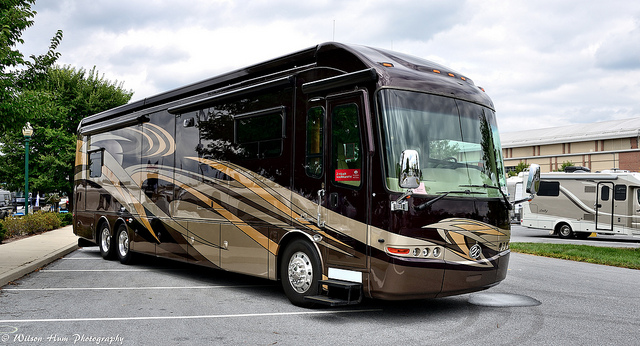
However, they do offer all the comforts of home – and more! They have oodles of storage and plenty of payload to cope, may have as many as ten berths (sleeping places), a proper kitchen and even a bath. Some have fitted washing machines, too! They’re all self-levelling when you reach your destination too, so there’s no need for spirit levels and levelling blocks.
The most luxurious versions have slide-out sections that expand your living space, but you’ll probably have to pay for two pitches to accommodate these. They may come with leather sofas, more than one wash-room, 48-inch TVs in the living space and the master bedroom (yes, there’s a master bedroom), probably even a cocktail cabinet.
There are smaller RVs: B-class are more the size of coach-built motorhomes and C-class ones come between A and B in size. They are all equipped for the comfort-loving American market, as homes from home, and even the C-class ones may not fit in your driveway. If you don’t need that level of luxury (and cost), stick with the European motorhome makers.
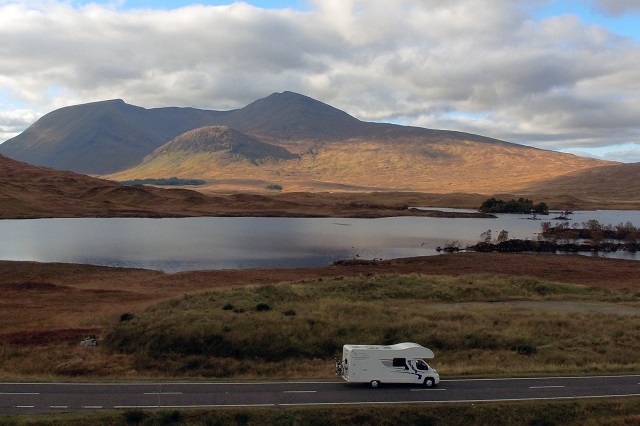
Like everything else, your choice of campervan, motorhome or RV is very personal. If you’re thinking of buying one, it’s worth hiring first to get an idea of what you like (and dislike) and how easy you find a large vehicle to drive, reverse and fit into tight driveways and narrow roads. There’s plenty of choice, so don’t rush. Get started with your next holiday using our Try Before You Buy service, where you can rent one of our motorhomes before buying, and if you want to purchase it after your trip, we will deduct the hire charges from the final sale price (up to 4 days rental price). Get in touch if you’d like to hear more.
It’s also worth considering that, if you’d only use it a few weeks a year, hiring a campervan, motorhome or RV might work out cheaper and more practical for you. You can hire to suit the size of your party, the roads you’ll be travelling, the kit you want to carry; and you won’t have to pay road tax or insurance for the 40-odd weeks of the year when the van is occupying your driveway!
Choose us for motorhome hire Scotland, and you’ll be travelling in comfort with our coach-built motorhomes, which are actually pleasant and manageable to drive; check out our motorhomes for hire to see which one is best suited to your needs, and just give us a call or email if you have any questions.